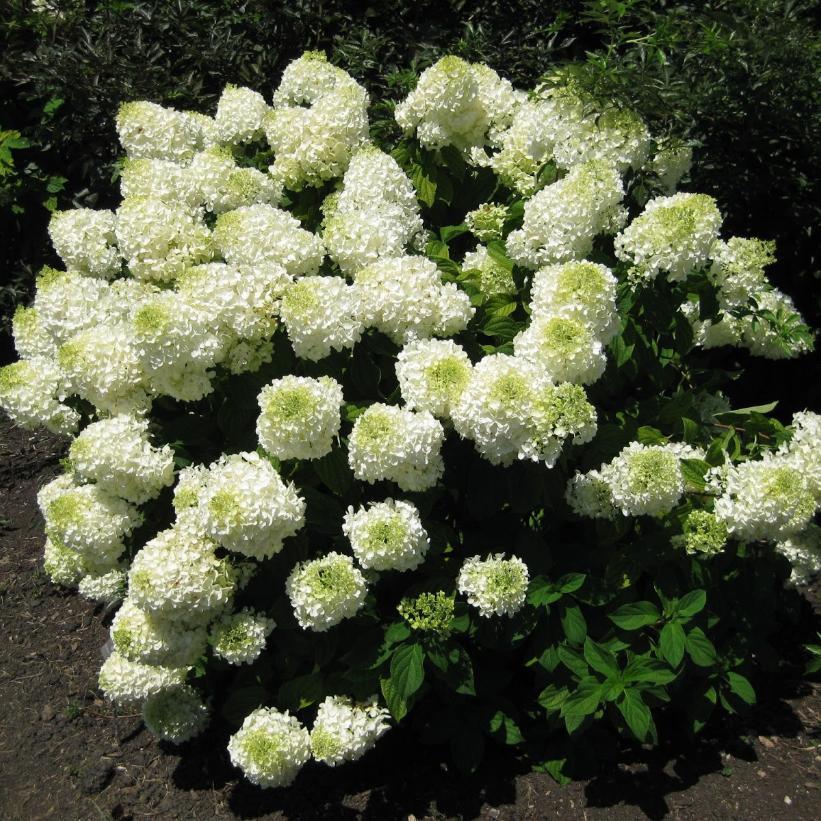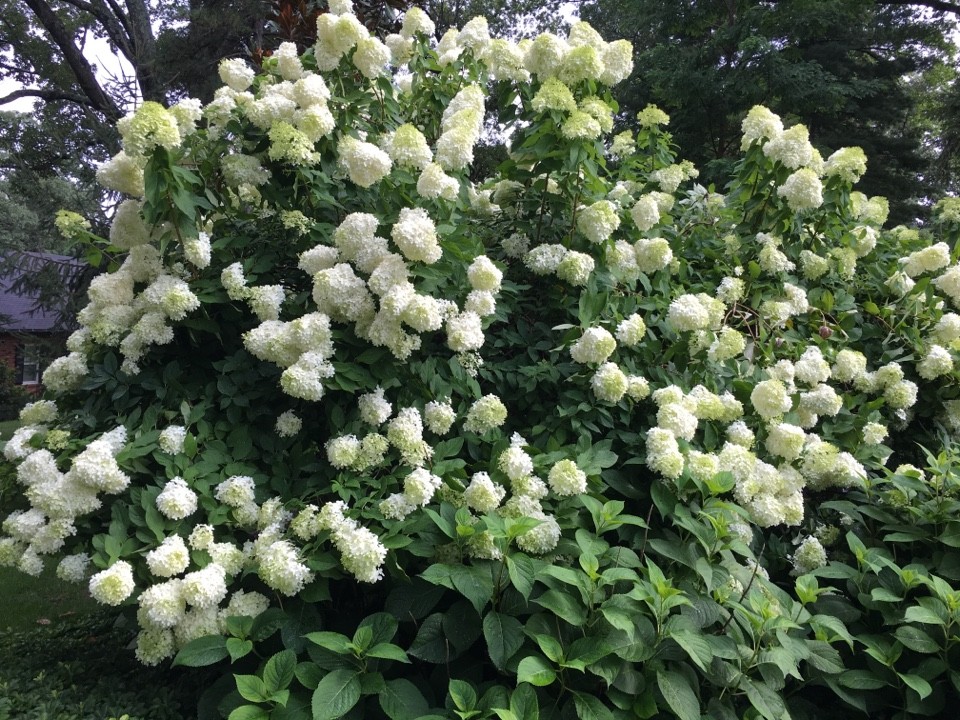Hydrangea Paniculata Bombshell: The Showstopping Shrub That Will Bloom All Summer Long
Hydrangea Paniculata Bombshell: The Showstopping Shrub That Will Bloom All Summer Long
Hydrangea paniculata 'Bombshell' is a compact, bushy shrub that produces large, cone-shaped clusters of creamy-white flowers from midsummer to fall. The flowers are sterile, meaning they do not produce seeds, so they can last for several weeks without fading. 'Bombshell' is a relatively new variety of panicle hydrangea, but it has quickly become one of the most popular due to its compact size, long blooming period, and showy flowers.
Growing Conditions
'Bombshell' hydrangeas are relatively easy to grow. They prefer full sun to partial shade and well-drained soil. They are not as fussy about soil type as some other hydrangeas, but they do appreciate soil that is rich in organic matter. 'Bombshell' hydrangeas are also relatively drought tolerant, but they will flower best if they are watered regularly during the summer months.
Pruning
'Bombshell' hydrangeas do not require a lot of pruning. In fact, some gardeners recommend not pruning them at all, as this can encourage more vigorous growth and larger flowers. If you do choose to prune, it is best to do so in the spring, before the plant blooms. Simply remove any dead, diseased, or damaged branches. You can also trim back any branches that are crossing or rubbing against each other.
Fertilizing
'Bombshell' hydrangeas benefit from a light application of fertilizer in the spring. A balanced fertilizer, such as 10-10-10, will work well. You can also use a fertilizer specifically formulated for hydrangeas. Apply the fertilizer according to the directions on the label.
Winter Care
'Bombshell' hydrangeas are hardy in USDA zones 3-8. In colder climates, they may benefit from a light layer of mulch around the base of the plant to help protect the roots from the cold. You may also want to tie the branches together to prevent them from breaking during heavy snow or ice.
Problems
'Bombshell' hydrangeas are generally pest- and disease-free. However, they can be susceptible to powdery mildew, especially if they are planted in areas with hot, humid summers. If you notice powdery mildew on your plant, you can treat it with a fungicide.
Troubleshooting
If your 'Bombshell' hydrangea is not blooming, it may be due to a number of factors. First, make sure the plant is getting enough sun. 'Bombshell' hydrangeas need at least 6 hours of sunlight per day to bloom well. If the plant is not getting enough sun, it may produce fewer flowers or no flowers at all.
Another possibility is that the plant is not getting enough water. Hydrangeas need regular watering, especially during the hot summer months. If the plant is not getting enough water, it may not be able to produce flowers.
Finally, if the plant is not getting enough fertilizer, it may also not bloom well. Hydrangeas benefit from a light application of fertilizer in the spring. If you have not fertilized your plant in the past year, try fertilizing it and see if that improves the blooming.
Conclusion
Hydrangea paniculata 'Bombshell' is a beautiful and easy-to-grow shrub that can add a touch of elegance to any garden. With its compact size, long blooming period, and showy flowers, 'Bombshell' is a great choice for gardeners of all levels of experience.
Hydrangea paniculata 'Bombshell' is a compact, dwarf variety of panicle hydrangea that is known for its stunning white flowers. The flowers are arranged in large, conical panicles that can reach up to 25 cm long. The flowers typically start out as a creamy white color, but they can fade to a pale pink as they mature. 'Bombshell' hydrangeas are relatively easy to care for and are well-suited for growing in a variety of conditions. They prefer full sun to partial shade and moist, well-drained soil. They are also relatively drought tolerant once established.
If you are looking for a beautiful and low-maintenance hydrangea, 'Bombshell' is a great option. To learn more about this variety, please visit .
FAQ of hydrangea paniculata bombshell
- What are the best conditions for growing Hydrangea paniculata bombshell?
Hydrangea paniculata bombshell prefers a sunny to semi-shady location in the garden or on the balcony, sheltered from the wind. It can be planted all year round, but should ideally be planted out in spring. The soil should be fresh, well-drained, rich in humus and nutrients, with a pH between 5.5 and 6 (slightly acidic).
- How do I care for Hydrangea paniculata bombshell?
Hydrangea paniculata bombshell is a relatively easy plant to care for. It needs to be watered regularly, especially during hot, dry weather. It is also helpful to apply a slow-release fertilizer in spring. In the fall, you can add a layer of mulch around the base of the plant to help retain moisture and protect the roots from the cold.
- How do I prune Hydrangea paniculata bombshell?
Hydrangea paniculata bombshell should be pruned in early spring, before the new growth begins. You can remove any dead, damaged, or diseased branches. You can also prune back the plant to shape it or to keep it at a manageable size.
- What are the common pests and diseases of Hydrangea paniculata bombshell?
The most common pests of Hydrangea paniculata bombshell are aphids, spider mites, and scale insects. These pests can be controlled with insecticidal soap or neem oil. The most common diseases of Hydrangea paniculata bombshell are leaf spot, powdery mildew, and rust. These diseases can be prevented by watering the plant at the base and avoiding overhead watering. If the plant does become infected, you can treat it with a fungicide.
- How long does Hydrangea paniculata bombshell live?
Hydrangea paniculata bombshell can live for many years with proper care. It is a hardy plant that can withstand cold winters and hot summers. With regular watering, fertilizing, and pruning, you can enjoy your Hydrangea paniculata bombshell for many years to come.
Image of hydrangea paniculata bombshell
- A large white hydrangea paniculata bombshell in full bloom. The flowers are cone-shaped and arranged in a cascading cluster. The leaves are dark green and glossy.

- A close-up of the flowers of a hydrangea paniculata bombshell. The individual flowers are small and star-shaped, with a delicate white color. The petals are slightly overlapping, giving the flower a soft, fluffy appearance.

- A hydrangea paniculata bombshell in full bloom against a blue sky. The flowers are a vibrant white color, and they contrast beautifully with the blue sky. The leaves are dark green and glossy, and they add a touch of richness to the overall composition.
- A hydrangea paniculata bombshell in a garden setting. The hydrangea is surrounded by other flowers and plants, including roses, lilies, and daisies. The hydrangea is the star of the show, however, and its large white flowers are sure to turn heads.

- A hydrangea paniculata bombshell in a vase. The hydrangea is beautifully arranged in a vase, and it makes a stunning centerpiece for a table or countertop. The flowers are a vibrant white color, and they contrast beautifully with the dark green leaves.

Post a Comment for "Hydrangea Paniculata Bombshell: The Showstopping Shrub That Will Bloom All Summer Long"